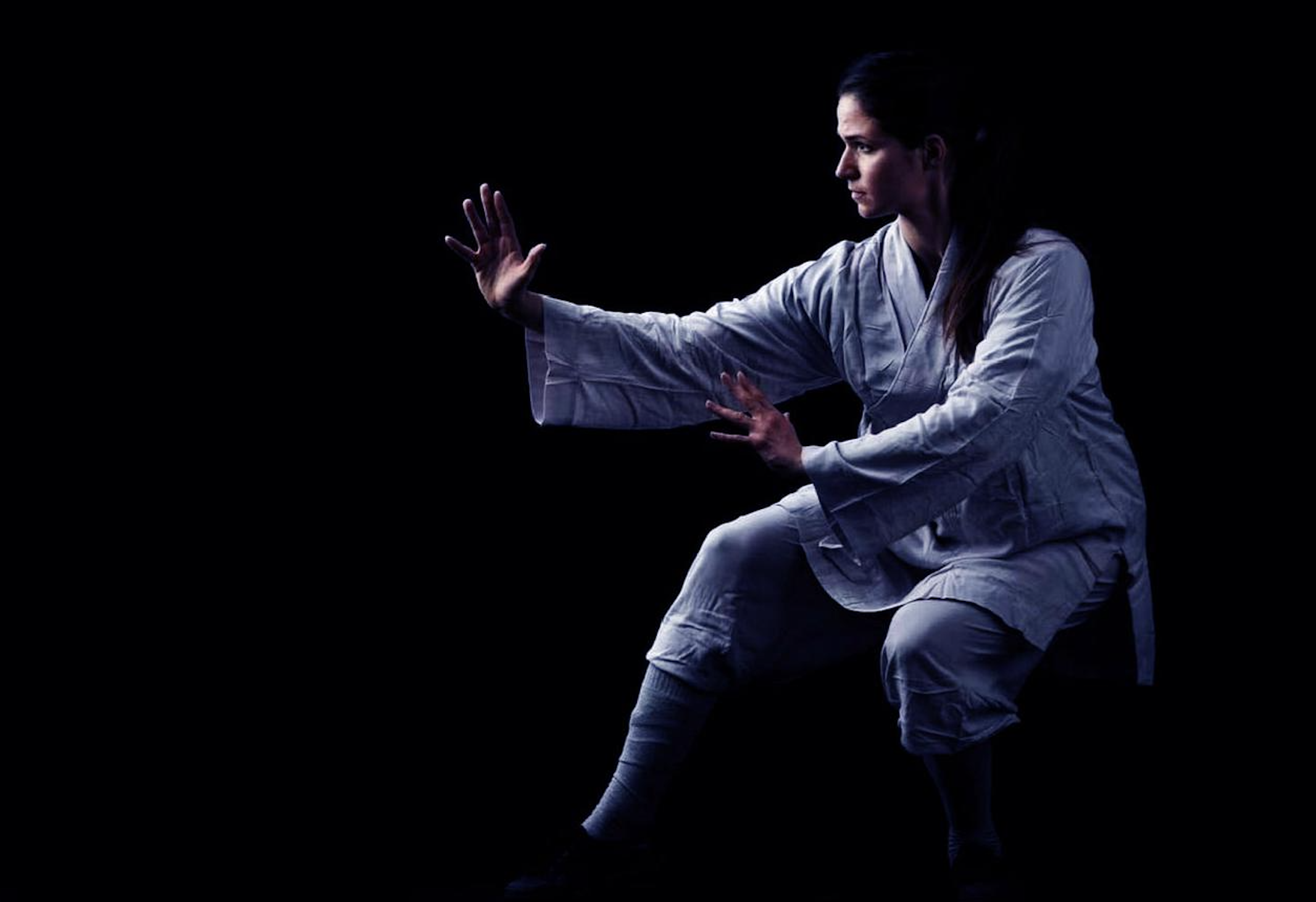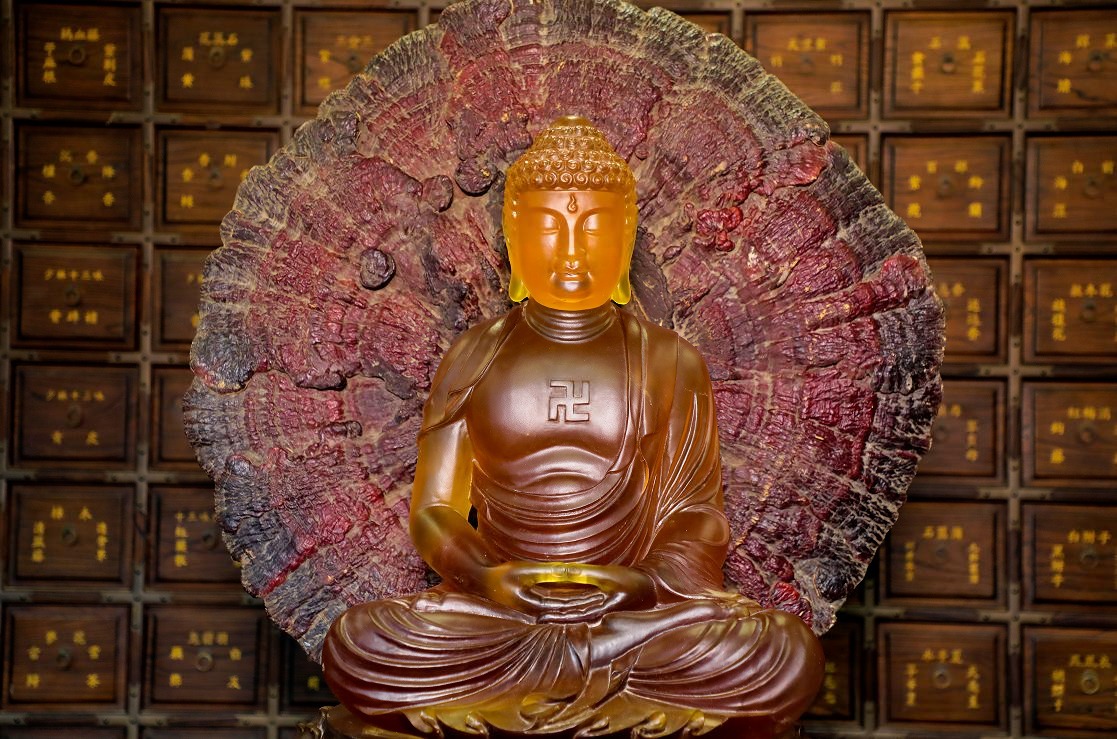In the bustling world of the five desires and six sensory dusts, modern people are overwhelmed daily by external challenges and inner chaos. Meditation, or seated Zen (Zazen), is an ancient, effective practice that offers a pathway to peace and insight. But why should we learn meditation? And how should we practice it? Let us explore the profound answers to these timeless questions.

1. Why Learn Meditation?
The Sixth Patriarch Huineng in the Platform Sutra said: “Externally, to be unmoved by all good and evil situations is called ‘sitting’; internally, to see one’s self-nature and not be disturbed is called ‘Zen’.” In other words, true meditation is not just sitting still, but maintaining clarity and equanimity in all situations.
1.1 To Calm the Mind and Body
We live surrounded by temptations and distractions. When the mind is agitated by external circumstances, suffering arises. Through meditation, we train the mind to be still, bringing peace to both body and mind. A settled mind leads to physical ease, and with continued practice, we experience deep relaxation and stability.
1.2 Cultivating Wisdom through Precepts and Concentration
The path of Zen requires three steps: precepts (moral discipline), concentration (meditation), and wisdom. Many people mistakenly rush to seek “wisdom” directly, attending lectures or rituals, only to gain superficial knowledge. Without moral foundation and meditative practice, true wisdom cannot arise. Meditation is the key link between precepts and wisdom.
1.3 Bringing Practice into Daily Life
Meditation is not just about formal sitting. It teaches us to become observers of our own thoughts and behaviors throughout the day. By constantly applying the awareness cultivated during meditation, we gain mental freedom and true inner peace.
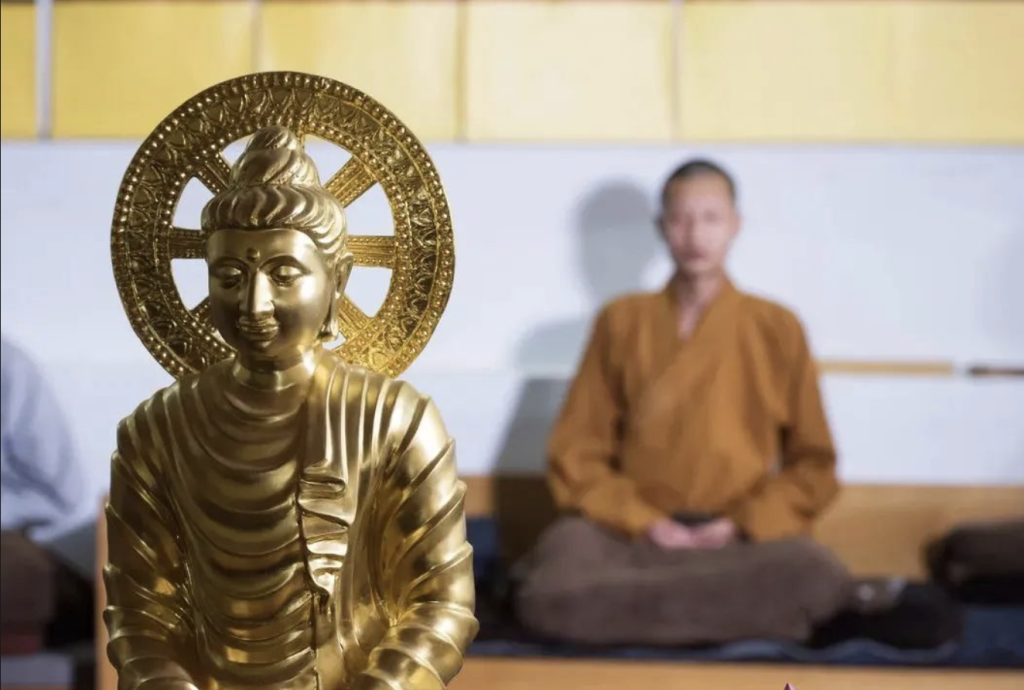
2. How to Meditate?
Meditation is not just sitting cross-legged—it is a holistic process. Here’s a practical guide:
2.1 The Prerequisite: Having the Opportunity and Fortune to Sit
To be able to meditate is already a rare blessing. In our busy modern lives, finding the time, space, and mindset to sit is in itself a form of spiritual fortune. Once seated, we can begin the work of calming the mind.
2.2 Posture: The Seven-Point Sitting Method
The traditional posture involves seven points:
- Legs Crossed: Sit in half-lotus (single leg over the other) or full-lotus (both legs crossed). If uncomfortable, sit on a chair with feet flat.
- Spine Upright: Let the vertebrae stack naturally without strain.
- Hands in Mudra: Form the ‘cosmic mudra’ with right palm over left, thumbs lightly touching, resting before the abdomen.
- Shoulders Relaxed: Spread slightly outward, relaxed but not slouched.
- Head Straight: Chin tucked slightly, aligning head with spine.
- Eyes Half-Closed: Slightly open, gazing forward; or closed if preferred.
- Tongue Against Palate: Gently touch the roof of the mouth.
You may also drape a towel over your legs to keep warm.
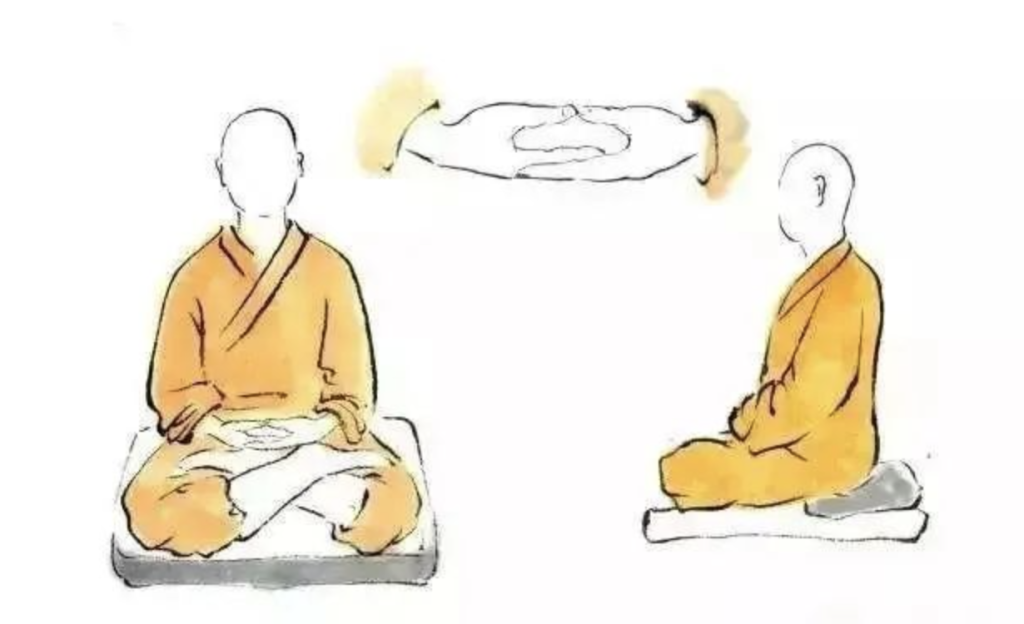
2.3 Breathing: Counting the Breath
For beginners, the “counting breath” method helps focus:
- Inhale, exhale — count “one”.
- Inhale, exhale — count “two”… up to ten.
- If distracted, gently return to one.
This anchors the mind and builds concentration. Over time, this leads to natural stillness and clarity.
2.4 Observing the Mind
Many people find that thoughts seem to increase during meditation. In reality, the mind is always full of thoughts; it’s just that in stillness, we finally notice them. Do not panic. Observe thoughts without chasing or resisting them. Gradually, the mind calms.
2.5 Duration and Progression
Start with short sessions—five to ten minutes. Gradually extend the time. Don’t force yourself. A short session with correct focus is more effective than a long, distracted one. Quality matters more than quantity.
2.6 Handling Common Obstacles
- Physical Pain: Stretch before sitting; try dynamic movements like walking meditation or qigong after sessions.
- Restlessness: Use breath counting or mantra recitation to focus.
- Fear or Illusions: Do not attach to strange sensations or visions. Just observe, stay grounded.
2.7 Beyond Sitting
Zen master Huineng taught that “Zen is not necessarily sitting or lying down—it is about training the mind.” Walking, chanting, working—all can be Zen. The essence is mindfulness.
3. Is Meditation Useful Even Without Reaching ‘Samadhi’?
Absolutely. Even without reaching deep meditative absorption, consistent sitting brings clear benefits:
- Improved concentration and energy
- Enhanced emotional balance
- Reduced anxiety and fatigue
- Greater clarity in daily life
One practitioner shared: despite only sitting half an hour each morning, without reaching deep meditative states, they felt physically lighter and more efficient at work. Meditation became their life support. Persistence is key. “Long sitting leads to Zen; long sitting builds merit.”
4. Advanced Tips and Encouragement
- Visit a Temple or Sangha: Guidance from experienced teachers helps avoid detours.
- Practice Mind-Body Harmony: Combine sitting with practices like Ba Duan Jin or walking meditation.
- Let Go of Attachments to Form: Don’t obsess over posture, duration, or experiences. Meditation is for seeing the true nature of mind.
As Zen Master Huangbo said: “All appearances are illusions. Abide in right mindfulness and continue observing until all illusions dissolve.”
Even if we cannot yet “polish a brick into a mirror,” repeated effort—day by day—will shape and refine our path.
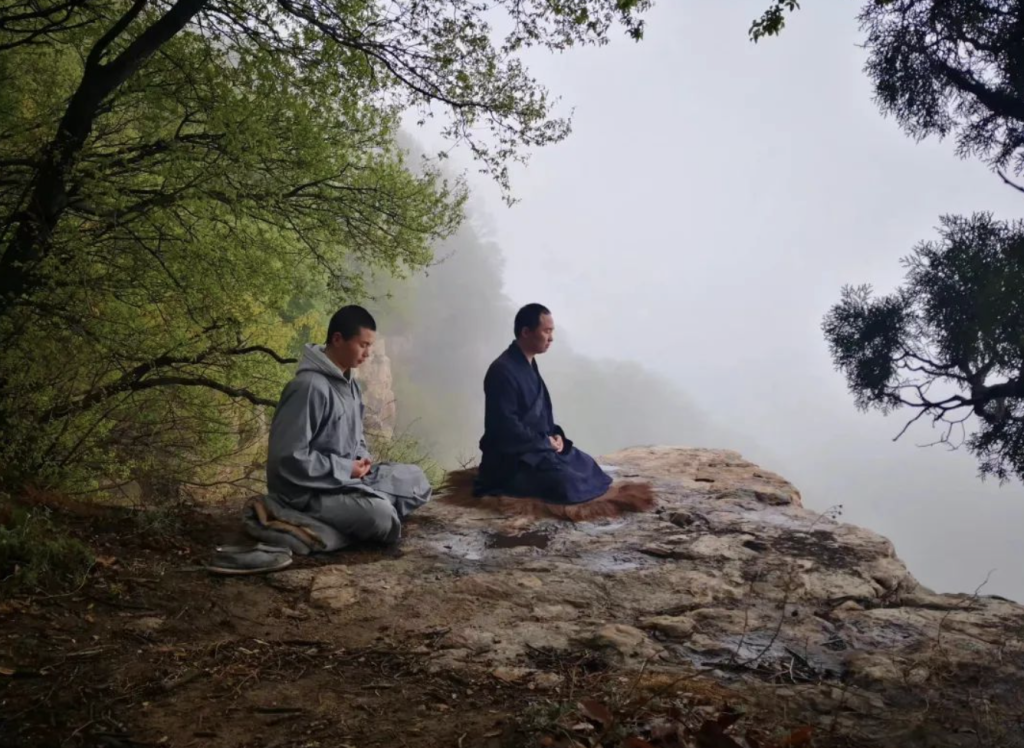
Why meditate? Because it trains the mind to return to its essence amidst chaos. How to meditate? With patience, method, and mindfulness. Meditation is not escape—it is awakening. In the world of impermanence, a still mind is the truest refuge.
